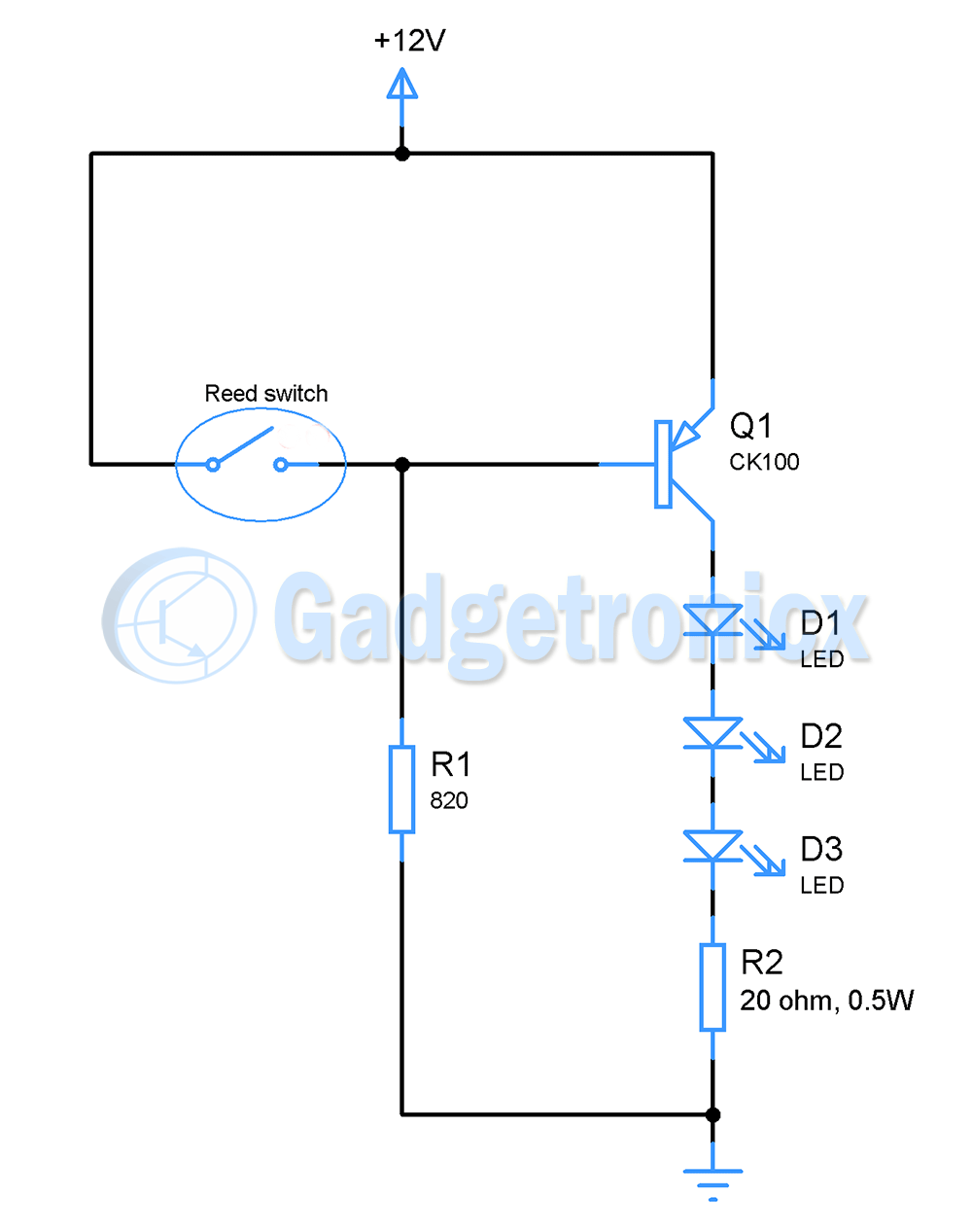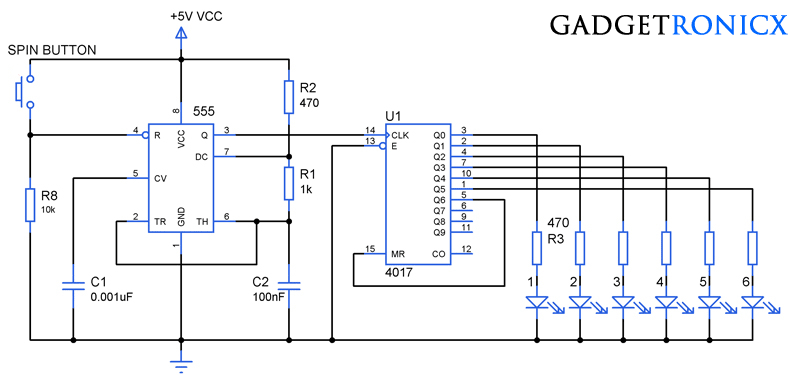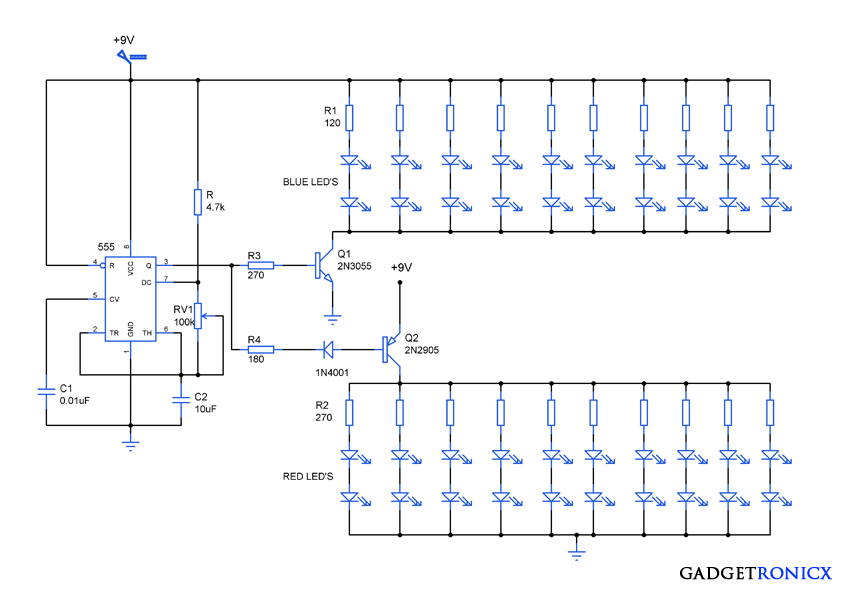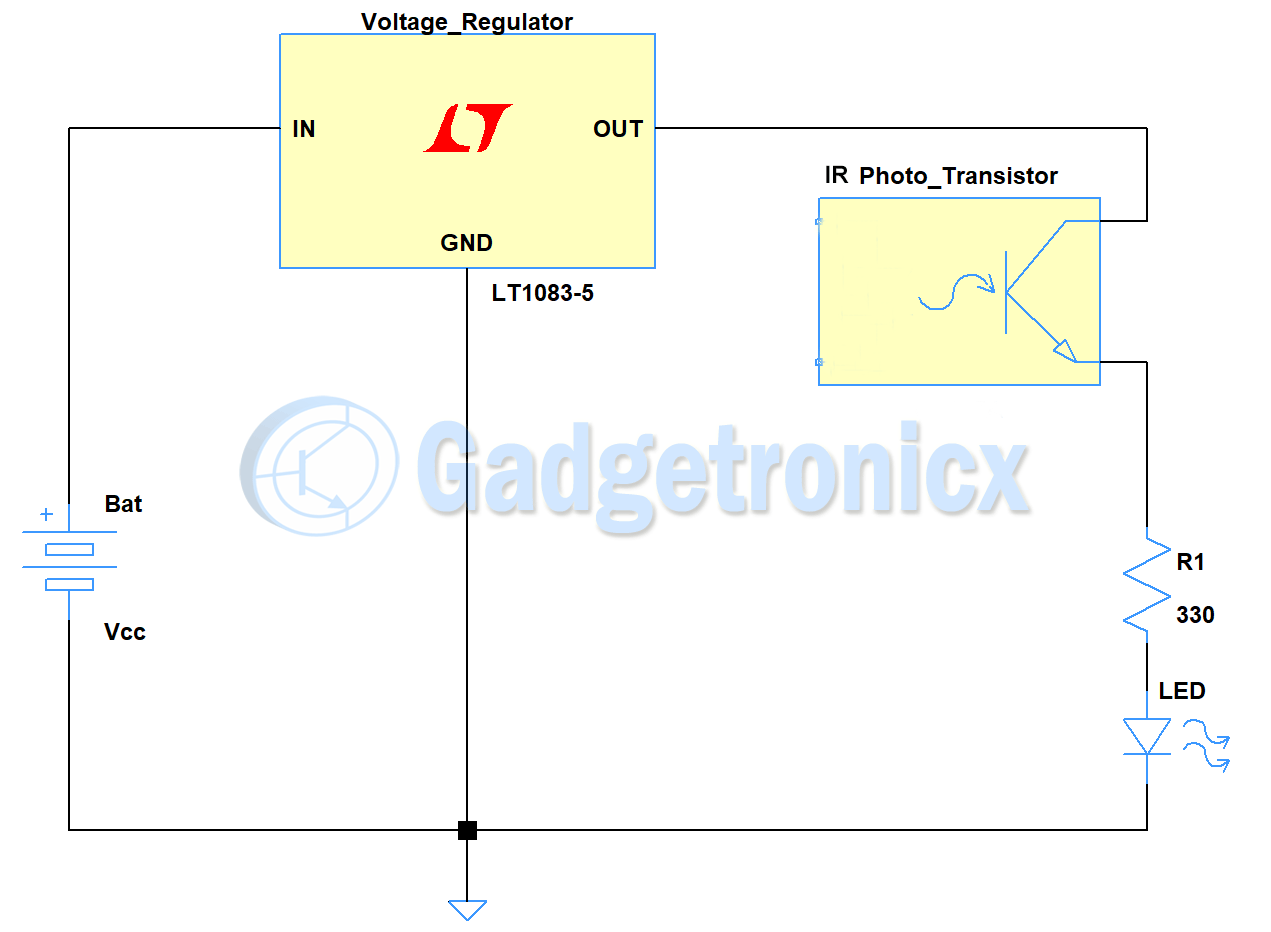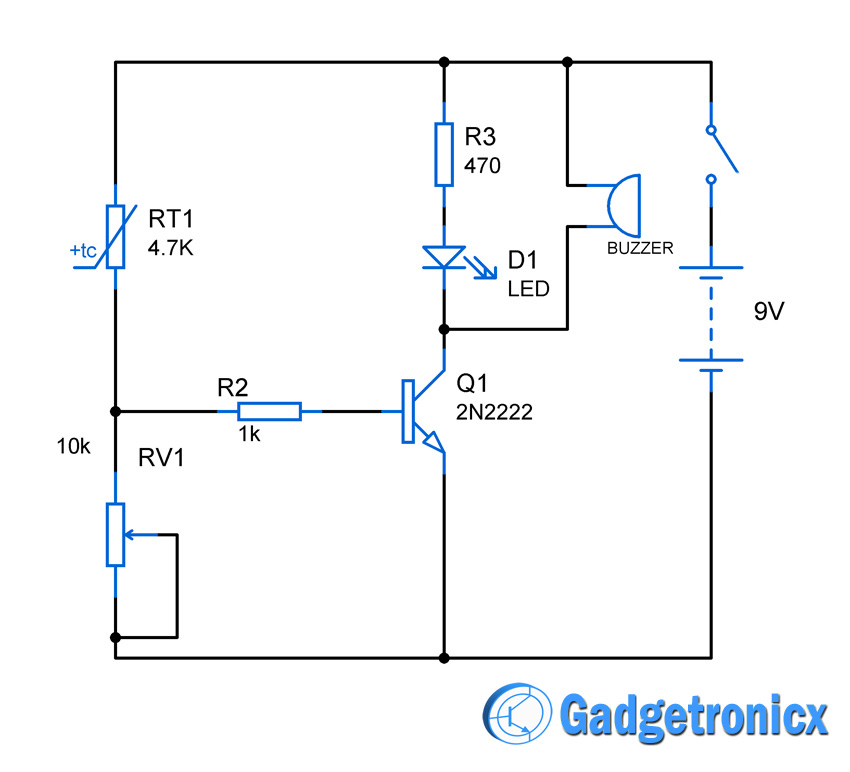LED lighting circuits are quite interesting to work and its lot of fun. This fading eyes circuit will suit greatly to simulate eyes in projects like Halloween decorations. This circuit requires very minimal number of components making it easy to build and implement.
WORKING OF SCHEMATIC DIAGRAM :
The working of this circuit starts off with the 9V Alkaline battery. I have used a DC clip to power up this circuit. The circuit uses transistor to activate the two LED’s. The resistor R1 is used to bias the base of transistor. The timing of LED fade will decide the resistor and electrolytic capacitor values C1 (1000 uF ) and R2 (1K). As soon you turn ON the circuit the capacitor C1 will start charging through the resistor R1.
As Capacitor voltage increases it activates the transistors to light up the LED. The capacitor charging time will give a nice fading in and fading out effect to the LED’s connected to the emitter terminal of transistor Q1 ( 2N2222A ). When the battery is disconnected or the circuit is turned OFF the resistor connected in parallel to C1 will discharge the capacitor. This in turn will produce a nice fade out effects in the LED’s connected to the emitter of transistor Q1.
The resistor R3 used along with the LED’s in series to limit the current flow through it. Removing this resistor might damage the LED’s since there will be no restriction for the current flow through the LED’s.
NOTE:
- You can increase the number of LED’s added in the circuit provided the transistor is capable to source current for the number of LED’s.
- I have used 9V alkaline battery to power up this circuit in order to make it more portable and easy to use. So you may need to use batteries if you need easily portable setup too.
- If you intend to add more LED’s which is more current hungry, you may need to use power supply that can supply ample amount of current for your LED’s.


